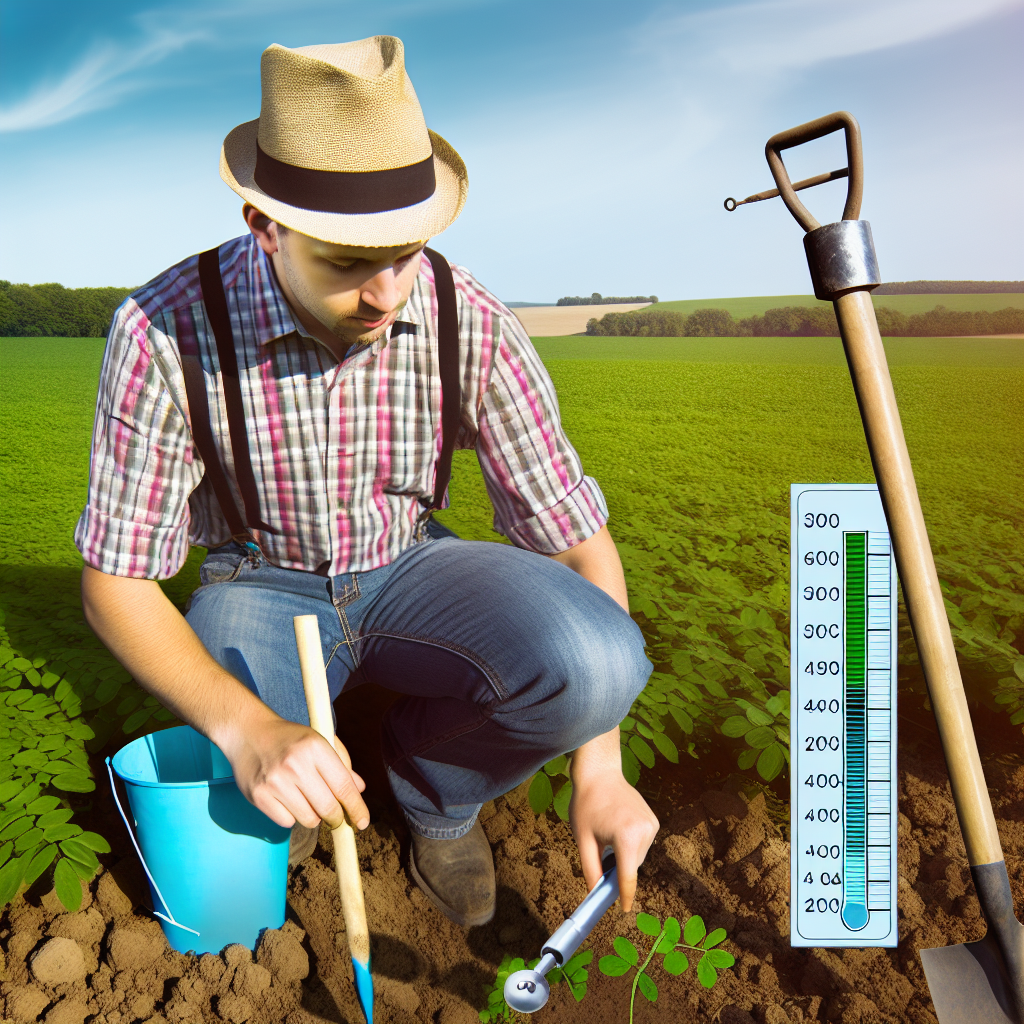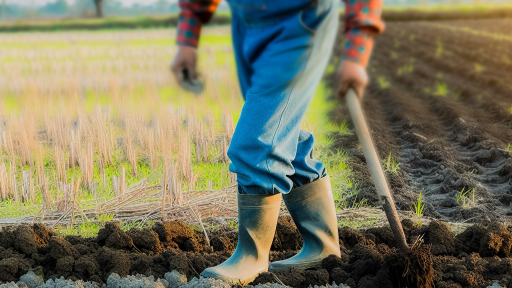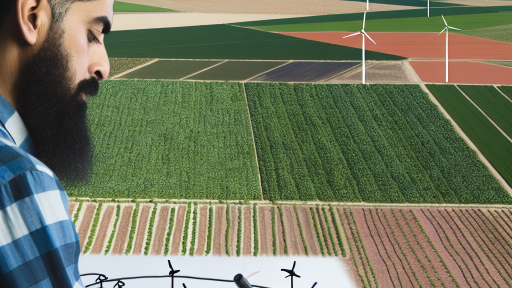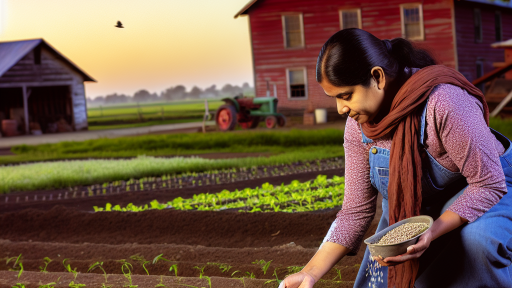Introduction to Carbon Sequestration
Definition of Carbon Sequestration
Carbon sequestration refers to the process of capturing and storing atmospheric carbon dioxide.
It aims to reduce greenhouse gases in the atmosphere.
This technique plays a crucial role in mitigating climate change.
Importance in Agriculture
Carbon sequestration is vital for sustainable agricultural practices.
It enhances soil health and increases fertility.
Moreover, it contributes to biodiversity by improving habitat conditions.
Farmers can benefit economically through carbon credits and sustainable practices.
Mechanisms of Carbon Sequestration
Several mechanisms facilitate carbon sequestration in farming systems.
- Soil organic matter can store significant amounts of carbon.
- Cover cropping protects soil and enhances carbon storage.
- Agroforestry systems integrate trees into farming, increasing carbon capture.
Challenges and Opportunities
Despite its advantages, integrating carbon sequestration faces challenges.
These include economic barriers and limited farmer awareness.
However, educational programs can raise awareness and promote its benefits.
Additionally, government incentives can support farmers in adopting these practices.
Understanding the Science Behind Carbon Sequestration
Defining Carbon Sequestration
Carbon sequestration refers to the process of capturing and storing atmospheric carbon dioxide.
This process helps mitigate the effects of climate change.
It can occur naturally or through human intervention.
Transform Your Agribusiness
Unlock your farm's potential with expert advice tailored to your needs. Get actionable steps that drive real results.
Get StartedHow Carbon Sequestration Works
Plants absorb carbon dioxide during photosynthesis.
They convert it into organic matter, such as leaves and roots.
Soils also play a crucial role in storing carbon.
Microorganisms in the soil decompose organic matter, releasing some carbon back into the atmosphere.
However, much of it remains stored in the soil.
Types of Carbon Sequestration
There are two main types: biological and geological.
Biological carbon sequestration occurs through living organisms.
- Forests, grasslands, and agricultural lands are prime examples.
- Sustainable land management practices enhance biological sequestration.
Geological carbon sequestration involves capturing carbon dioxide emissions from industrial sources.
This carbon dioxide then gets injected deep underground into rock formations.
- These formations must have suitable properties to hold the gas securely.
- This process can significantly reduce greenhouse gas emissions.
The Role of Soil in Carbon Sequestration
Soil is an essential carbon reservoir.
Healthy soils can store more carbon compared to degraded soils.
Practices such as cover cropping and reduced tillage increase soil organic matter.
This enhances the soil’s capacity to sequester carbon.
Advantages of Integrating Carbon Sequestration in Farming Systems
Integrating carbon sequestration into farming systems offers multiple benefits.
- It improves soil health, leading to better crop yields.
- Farmers can potentially earn carbon credits by sequestering carbon.
- This helps create new revenue streams for agricultural producers.
Moreover, it aids in reducing the overall carbon footprint of farming operations.
Benefits of Integrating Carbon Sequestration into Farming Systems
Enhancing Soil Health
Carbon sequestration improves soil structure and fertility.
This process increases organic matter content in the soil.
As a result, soils can retain more moisture and nutrients.
Healthy soils promote better crop growth and resilience.
Reducing Greenhouse Gas Emissions
Implementing carbon sequestration practices lowers overall greenhouse gas emissions.
This contributes to climate change mitigation efforts.
Farmers can play a critical role in reducing atmospheric carbon dioxide levels.
By sequestering carbon, farming systems become more sustainable.
Increasing Farm Profitability
Carbon sequestration can enhance farm productivity over time.
Showcase Your Farming Business
Publish your professional farming services profile on our blog for a one-time fee of $200 and reach a dedicated audience of farmers and agribusiness owners.
Publish Your ProfileImproved soil health leads to higher yields and better quality crops.
As a result, farmers can increase their income from sustainable practices.
Additionally, they may benefit from carbon credit programs.
Supporting Biodiversity
Integrating carbon sequestration supports a diverse ecosystem on farms.
Healthier soils foster various plant and microbial species.
This diversity can lead to more stable farming systems.
Moreover, it helps to protect beneficial insects and wildlife.
Adapting to Climate Change
Carbon-sequestering practices enhance the resilience of farming systems.
They help crops withstand extreme weather events and droughts.
Farmers become better equipped to manage climate-related challenges.
This adaptability can safeguard food security in changing climates.
Find Out More: Wildlife-Friendly Practices for Sustainable Farms
Practical Strategies for Farmers
Understanding Carbon Sequestration
Carbon sequestration involves capturing and storing carbon dioxide from the atmosphere.
This process enhances soil fertility and reduces greenhouse gases.
Farmers can play a vital role in carbon storage through innovative practices.
Soil Management Practices
Implementing cover crops significantly improves soil health.
These crops prevent erosion and enhance organic matter in soils.
Rotational grazing helps maintain vegetation cover and soil structure.
This practice reduces compaction and fosters diverse plant growth.
Reduced Tillage Techniques
Minimizing tillage preserves soil structure and reduces carbon loss.
Use no-till or conservation tillage methods to protect soil integrity.
These techniques promote habitat for beneficial microorganisms.
Agroforestry and Mixed Farming
Integrate trees into farming systems to enhance carbon storage.
Agroforestry provides shade, reduces wind damage, and improves biodiversity.
Incorporating diverse crops further enhances soil health and productivity.
Utilizing Organic Amendments
Applying compost improves soil organic carbon levels effectively.
Organic amendments can enhance nutrient availability and soil resilience.
Regularly adding organic materials encourages microbial activity.
Water Management Strategies
Effective water management practices optimize soil moisture retention.
Creating retention ponds enhances water availability during dry spells.
Practices like contour farming reduce runoff and improve infiltration.
Monitoring and Assessment
Regular soil testing helps track carbon levels over time.
This information guides decision-making for soil health improvement.
Engaging with local agricultural extension services can provide valuable insights.
Community Engagement and Collaboration
Joining local cooperatives fosters knowledge-sharing among farmers.
Participating in carbon markets can incentivize sustainable practices.
Working together amplifies the impact of individual actions across landscapes.
You Might Also Like: Natural Recycling Methods for Agricultural Waste
Role of Agroforestry in Carbon Sequestration
Understanding Agroforestry
Agroforestry integrates trees and crops into farming systems.
This practice enhances biodiversity and soil health.
Showcase Your Farming Business
Publish your professional farming services profile on our blog for a one-time fee of $200 and reach a dedicated audience of farmers and agribusiness owners.
Publish Your ProfileFarmers cultivate various species simultaneously and benefit from multiple products.
Consequently, agroforestry leads to improved carbon storage in soils and vegetation.
Mechanisms of Carbon Sequestration
Trees naturally capture carbon dioxide during photosynthesis.
They store carbon in their biomass and root systems.
This process significantly contributes to carbon sequestration.
Moreover, trees enhance soil quality, further boosting carbon retention.
Benefits of Combining Trees and Crops
Combining trees and crops offers several ecological advantages.
- Enhanced soil structure and nutrient cycling.
- Increased resilience against pests and diseases.
- Improved microclimate for crops.
These benefits result in healthier ecosystems and more productive farms.
Successful Case Studies
Farmers worldwide have successfully implemented agroforestry systems.
In Brazil, cocoa growers integrate shade trees to enhance crop yields.
This method also improves biodiversity and protects against soil erosion.
Similarly, farmers in Kenya utilize agroforestry to boost coffee production.
They plant trees that provide shade and nutrients, optimizing growth conditions.
Challenges and Solutions
Adopting agroforestry comes with challenges.
Farmers may face initial costs and the need for knowledge and training.
However, providing financial incentives can encourage adoption.
Educational programs can also help farmers learn best practices.
By addressing these challenges, agroforestry can flourish as a strategy for carbon sequestration.
Find Out More: Organic Water Conservation Methods for Farmers

Cover Crops and Crop Rotation: Techniques for Managing Carbon Inputs
Understanding Cover Crops
Cover crops play a vital role in sustainable farming systems.
They prevent soil erosion, improve soil health, and enhance carbon sequestration.
Farmers can choose from various cover crop species to meet their specific needs.
Leguminous cover crops, like clover and peas, fix nitrogen in the soil.
Non-leguminous species, such as rye and oats, provide ground cover during off-seasons.
Benefits of Cover Crops
Cover crops contribute to increased organic matter in the soil.
This organic matter enhances soil structure and nutrient availability.
Additionally, cover crops help suppress weeds, reducing the need for herbicides.
By improving water retention, they also boost resilience to drought conditions.
Implementing Crop Rotation
Crop rotation is another effective technique for managing carbon inputs.
This practice involves changing the type of crop grown in a specific field each season.
Diverse rotations can break pest and disease cycles, improving crop health.
Rotating between crops with different nutrient needs can enhance soil fertility.
Benefits of Crop Rotation
Crop rotation typically leads to more efficient use of soil resources.
This strategy helps maintain soil moisture and fertility over time.
Additionally, rotating crops supports biodiversity in the agroecosystem.
Combining Cover Crops and Crop Rotation
Integrating cover crops with crop rotation magnifies benefits.
This combination enhances soil structure and promotes healthier ecosystems.
Farmers can design systems that maximize both carbon sequestration and productivity.
Practical Implementation
Farmers should establish a rotation plan tailored to their local conditions.
They can experiment with different cover crops to find suitable options.
Showcase Your Farming Business
Publish your professional farming services profile on our blog for a one-time fee of $200 and reach a dedicated audience of farmers and agribusiness owners.
Publish Your ProfileFrequent soil testing will help assess changes in carbon levels.
Collaborative learning with local agricultural extension services can provide valuable guidance.
Discover More: IPM Techniques to Combat Common Crop Pests
Challenge of Measuring Carbon Sequestration
Understanding Carbon Sequestration Measurement
Measuring carbon sequestration presents significant challenges for farmers.
Different methods may yield varying results depending on numerous factors.
For instance, soil type, climate, and agricultural practices influence measurements.
Accurate quantification is essential for assessing environmental impact.
Tools for Measurement
Various tools exist for measuring carbon sequestration effectively.
Remote sensing technologies offer valuable data from aerial imagery.
Satellite data can provide insights into land use changes over time.
Additionally, ground-based methods can offer precise measurements.
Soil sampling remains one of the most direct approaches.
Techniques for Effective Measurement
Several techniques can enhance the accuracy of carbon measurement.
Using multiple methods improves data validity and reliability.
For example, combining aerial and ground measurements can reinforce findings.
Establishing long-term measurement sites also proves beneficial.
Continual monitoring helps understand carbon storage dynamics.
Challenges with Current Methods
Current measurement methods are not without limitations.
Some techniques are costly and require substantial labor investment.
Furthermore, variations in local conditions can complicate interpretation.
Balancing accuracy, cost, and practicality is vital for farmers.
Emerging Innovations
Recent advancements show promise for improving measurement capabilities.
New technologies, such as drones, offer dynamic data collection options.
Machine learning algorithms can analyze large data sets efficiently.
These innovations could transform how farmers approach carbon measurement.
Government Policies and Incentives Supporting Carbon Sequestration in Agriculture
Overview of Current Policies
Governments around the world actively implement policies to support carbon sequestration.
These policies often include financial incentives for farmers who adopt sustainable practices.
In the United States, the USDA emphasizes programs aimed at soil health improvement.
Moreover, many countries leverage tax breaks for farmers using advanced carbon management techniques.
Key Incentives for Farmers
Incentives motivate farmers to integrate carbon sequestration into their practices.
Grants provide crucial funding for projects aimed at enhancing soil carbon storage.
Additionally, cost-sharing initiatives help reduce the financial burden of implementing new technologies.
Farmers can also benefit from revenue generated through carbon credit markets.
This approach compensates farmers for reducing greenhouse gas emissions through agricultural practices.
Examples of Successful Programs
Several programs demonstrate the effectiveness of government support for carbon sequestration.
The Conservation Stewardship Program enhances carbon soil levels while improving farm profitability.
Similarly, the Environmental Quality Incentives Program equips farmers with resources for sustainable practices.
Programs like these have shown increased adoption of carbon-friendly techniques across various regions.
Collaboration with Private Sector
Collaboration between government and private entities enhances carbon sequestration efforts.
Public-private partnerships empower farmers with access to innovative technologies.
Showcase Your Farming Business
Publish your professional farming services profile on our blog for a one-time fee of $200 and reach a dedicated audience of farmers and agribusiness owners.
Publish Your ProfileCompanies like Terra Global specialize in carbon offset strategies tailored for agriculture.
These collaborations often result in enhanced sustainability and profitability for farmers.
Challenges and Future Directions
Despite progress, challenges persist in implementing effective carbon sequestration policies.
Limited awareness and understanding of these initiatives hinder farmer participation.
Moreover, navigating the complexities of carbon credit systems can be daunting.
Future efforts must focus on education and simplifying access to resources for farmers.
Engaging farmers directly in policy formulation can foster greater acceptance and effectiveness.
Additional Resources
Agricultural Diversification: Practice and Policy – National …




